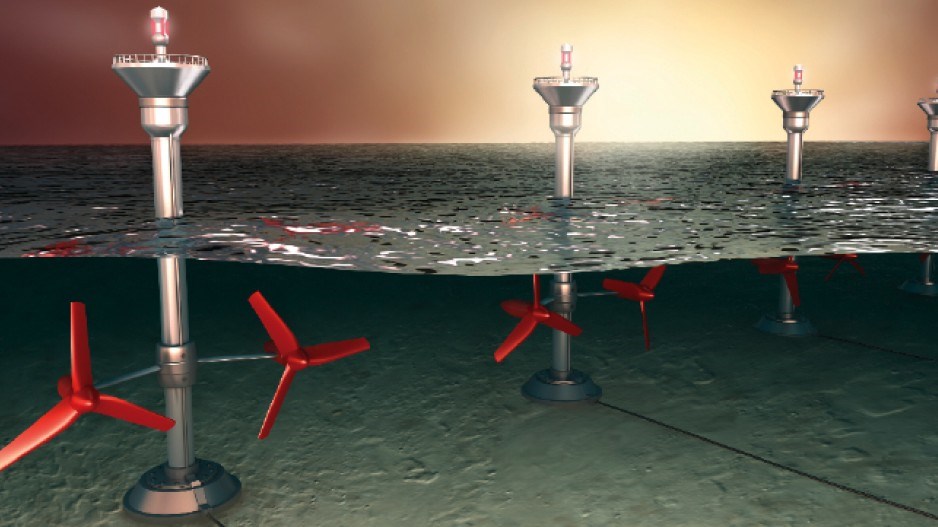A consortium of investors based in Vancouver has ambitious plans to turn the B.C. coast into a tidal powerhouse.
Western Tidal Holdings, a group of seven investors with backgrounds in energy, has identified 20 potential sites on the B.C. coast for tidal power generation.
The company has applied to conduct site tests at several locations on Vancouver Island, Juan de Fuca Strait and the Sunshine Coast. Some of the applications are now in a public comment phase. An application for Dodd Narrows near Nanaimo is awaiting ministerial approval.
Once approval is granted, the company would spend hundreds of thousands of dollars, per site, conducting tests, and millions more to install tidal turbines.
Western Tidal is a developer, not a technology company, so the kind of tidal generators used could vary from site to site.
At least one environmental group has expressed concern about the impact of underwater turbines on killer whales. But economics, not marine ecology, will likely be Western Tidal’s biggest obstacle.
B.C.’s abundance of clean, relatively cheap hydro power makes it tough for renewable power developers to do business here. BC Hydro’s rates for renewable energy projects are around $0.10 to $0.13 per kilowatt hour (kW/h). Tidal power proponents say they need to be on par with Nova Scotia – $0.65 per kW/h – to make it economically viable here.
Western Tidal CEO Tony Irwin said the costs will come down, just as they have for wind energy. He added that his company is focused on the long-range economics of tidal power, not a quick financial return.
“We believe marine energy is at the same cost point cycle that wind energy was 20 years ago. We have a five- to 10-year build-out. We are an extremely patient company.
“This isn’t a bunch of starry-eyed kids coming out of university. We’re fairly well-hardened business entrepreneurs, and we believe there’s a real opportunity for B.C. to move on this technology.”
Of the 20 sites identified, six are on Vancouver Island. One of the sites the company has applied to test is Race Rocks in Juan de Fuca Strait.
Vancouver’s Clean Current Renewable Energy Systems conducted a successful tidal power demonstration project at Race Rocks a few years ago and then licensed its technology to French power generation giant Alstom. Alstom had planned to use the technology in the world’s largest tidal power demonstration project in the Bay of Fundy, but later cancelled the agreement.
Siemens and Rolls-Royce have also invested in tidal technology.
“From a business point of view, the thing that really convinced us [to invest in tidal power] is who is in the market,” Irwin said.
“Four or five years ago, it was small, independent tidal power developers. Now if you look at the market, those people have either been assumed or bought out by the likes of Siemens, Rolls-Royce, Alstom. When that happens, prices will go down and quality will go up.”
He added that B.C.’s growing energy needs – and its commitment to meeting it with renewable energy – means BC Hydro and the provincial government will have no choice but to pay the prices required to build renewable energy.
“If B.C. is going to meet the expected electricity demand as laid out by Hydro, and it’s going to be clean energy, they’re going to need every electron of renewable energy that they can get.” •
BIV on clean energy
Want to know more about issues affecting B.C. clean energy? BIV has tackled the subject extensively. Here are some highlights of the past few months:
•Small clean-energy firms buckle under headwinds, issue 1213, January 22-28
•Biggest alternative energy firms in B.C., issue 1210, January 1-7
•Exports key to clean-tech sector, issue 1210, January 1-7
•B.C. firms finding green in clean, issue 1203, November 13-19, 2012
•Star turn for carbon-offset firm, issue 1202, November 6-12, 2012
•Clean-energy companies challenged by cheap gas, issue 1196, September 25-October 1, 2012
•UBC opens $34m clean-tech “living laboratory”, biv.com, September 14, 2012




